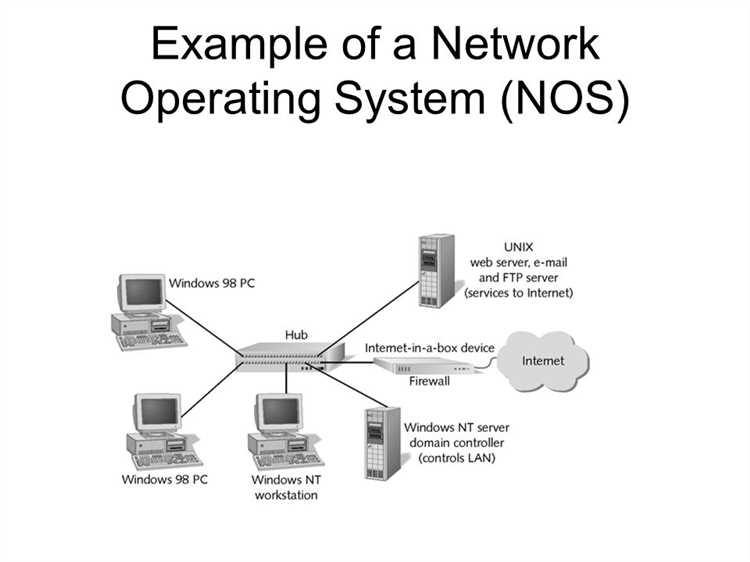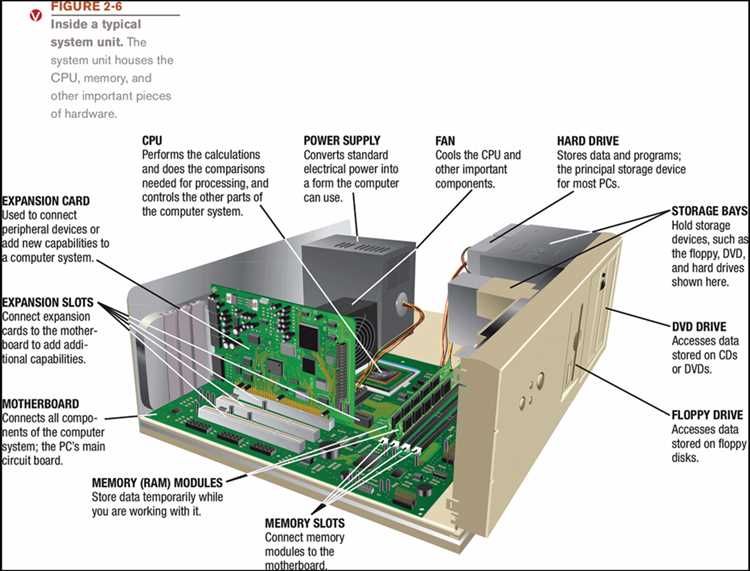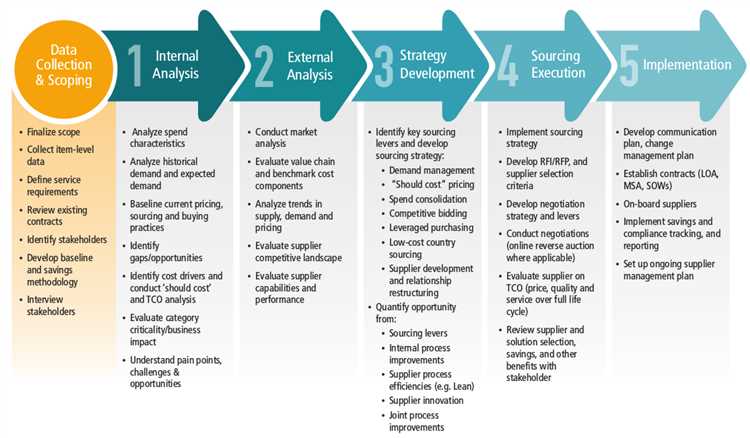Contpark specializes in offering a robust terminal management solution. Its platform includes features for real-time visibility, workflow automation, and security, simplifying terminal operations and increasing productivity.

The Bulk Terminal Operating System (BTOS) is a software solution specifically designed for port terminals to streamline their operations and maximize efficiency. In today’s maritime industry, where competition is fierce and demands are high, implementing an advanced terminal operating system is crucial for staying ahead of the curve.
BTOS leverages the power of telematics, ICT connectivity, and intelligent data management to optimize the entire workflow in a bulk terminal, from planning and dispatch to handling and billing. It provides real-time monitoring and analytics, enabling terminal operators to make data-driven decisions and respond quickly to market changes.
With BTOS, port terminals can efficiently manage their assets, such as containers, equipment, and warehouses. The system automates processes like containerization, repair, and maintenance, minimizing downtime and maximizing productivity. It also ensures seamless communication and coordination among different stakeholders, including customers, truck drivers, and insurance providers.
One of the key features of BTOS is its ability to track and manage cargo throughout the entire supply chain. From the moment it enters the terminal to the moment it is unloaded and dispatched, the system provides real-time visibility and updates. This not only improves efficiency but also reduces the risk of lost or misplaced cargo.
Moreover, BTOS has a user-friendly dashboard that provides a comprehensive overview of the terminal’s operations, including berth and gate utilization, equipment status, and workforce allocation. This allows terminal operators to make informed decisions and optimize their resources effectively. The system also generates accurate invoices and documents, simplifying the billing process and reducing errors.
In addition to efficiency gains, BTOS also contributes to environmental sustainability. By optimizing container handling and reducing truck haulage, it minimizes fuel consumption and greenhouse gas emissions. The system also promotes green practices like dredging and infrastructure optimization to minimize the environmental impact of terminals.
In conclusion, BTOS is a powerful tool that helps port terminals streamline their operations, maximize efficiency, and stay ahead of the competition. Its advanced features, such as real-time monitoring, intelligent data management, and seamless communication, make it an essential asset for any bulk terminal seeking to optimize its workflows and enhance its overall performance.
A Bulk Terminal Operating System (BTOS) is an automation solution that helps streamline operations and maximize efficiency in bulk terminals. It encompasses software, hardware, and telematics technologies to digitize various procedures and optimize the movement of goods in the maritime industry.
BTOS provides real-time monitoring and tracking capabilities, allowing operators to visualize and manage inventory, assets, and operations. It utilizes a database to store and analyze data, enabling intelligent decision-making and predictive analysis for enhanced planning and cost optimization.
One of the key features of BTOS is its ability to manage the stacking and stowage of bulk goods in the yard. It provides a visualization of the yard, allowing operators to efficiently plan for the storage and retrieval of goods. This helps to minimize the time and cost associated with locating and moving goods within the terminal.
BTOS also plays a crucial role in ensuring compliance with legal and regulatory requirements. It helps monitor and regulate emissions, as well as track the movement of goods from truck to gate to berth. This facilitates efficient invoicing and enhances overall transparency in the operation.
Furthermore, BTOS aids in the procurement and management of assets, such as cranes and dredging equipment. It provides a platform for communication and collaboration between different stakeholders, enabling seamless coordination and efficient resource allocation.
In addition to improving operational efficiency, BTOS also contributes to the development of a greener and more sustainable industry. By monitoring and optimizing resource usage, it helps reduce waste and effluent discharge, thus minimizing the environmental impact of bulk terminal operations.
In summary, a Bulk Terminal Operating System (BTOS) is a comprehensive solution that leverages automation, digitization, and intelligence to streamline operations, enhance planning, optimize costs, and ensure compliance in the bulk terminal industry.
Implementing a Bulk Terminal Operating System (BTOS) offers numerous benefits for cargo handling operations. With the development of advanced technologies, BTOS provides a comprehensive solution to streamline operations and maximize efficiency.

The Bulk Terminal Operating System (BTOS) is a state-of-the-art software solution that helps streamline operations and maximize efficiency in terminal management. With its innovative features and advanced functionality, BTOS can greatly enhance the performance of your terminal, making it more productive and environmentally friendly.
One of the key benefits of BTOS is its green operation capabilities. The system utilizes sensors and analytics to monitor and optimize energy usage, reducing waste and carbon emissions. This not only helps to protect the environment, but also lowers operational costs for the terminal.
BTOS also offers comprehensive management tools for various aspects of terminal operations. It includes features for billing, stacking, berth planning, transshipment, and vessel scheduling, all of which can be easily accessed and managed through a user-friendly interface. This allows for efficient digitalization of manual processes, improving accuracy and reducing processing time.
Furthermore, BTOS provides advanced tracking and communication capabilities, facilitating smooth coordination between different stakeholders in the shipping industry. Real-time visibility of cargo movements and document management ensure efficient fulfillment of orders and easy integration with logistics partners.
In addition, BTOS offers powerful analytics and visualization tools, enabling terminal operators to gain insights into the performance of their equipment and operations. This data-driven approach helps identify areas for optimization and improvement, leading to better financial management and increased profitability.
BTOS also supports regulatory compliance and industry standards, providing tools for monitoring and reporting on safety, security, and environmental regulations. It can assist with documentation, tracking, and alert systems, ensuring that terminal operators stay up to date with the latest requirements and avoid penalties.
With its comprehensive features and advanced functionality, BTOS is a valuable solution for terminal operators looking to increase productivity and efficiency. From procurement and distribution to financial management and equipment optimization, BTOS can help streamline your operations and drive growth in the maritime industry.
In the rapidly evolving world of logistics and supply chain management, inventory management plays a crucial role in ensuring the sustainability and competitiveness of a business. With the introduction of Bulk Terminal Operating System (BTOS), inventory management has been revolutionized, streamlining operations and maximizing efficiency.
BTOS provides a comprehensive and strategic solution for managing inventory in bulk terminals. Using advanced ICT and sensor technology, it allows real-time tracking and monitoring of stock movement, both within the terminal yard and during transportation. This level of connectivity enables accurate prediction and scheduling of inventory, leading to efficient handling and storage throughout the supply chain.
One of the key features of BTOS is its intuitive dashboard, which provides a centralized view of inventory levels, wharf availability, and berth scheduling. This allows stevedores and terminal operators to make informed decisions regarding the allocation of resources, optimizing operations and reducing downtime. Additionally, the system incorporates green and environmentally-friendly practices by considering emissions, energy usage, and effluent management, ensuring a sustainable approach to inventory management.
BTOS integrates with hardware equipment such as cranes, reach stackers, and tugmasters, providing real-time data on their availability, maintenance needs, and efficiency. This enables proactive maintenance planning, reducing downtime and improving overall equipment performance. The system also facilitates accurate billing and contract management, providing a transparent and efficient process for customers and stakeholders.
Furthermore, BTOS supports rail and transit chain connectivity, enabling seamless tracking and containerization of cargo throughout the entire shipping process. This integration enhances supply chain visibility and enables efficient movement of goods from the dock to the final destination. The system also incorporates a predictive analytics module, which analyzes historical data to forecast demand and optimize inventory levels, reducing the risk of inventory shortages or overstocking.
In conclusion, BTOS revolutionizes inventory management in bulk terminals, providing a comprehensive and strategic solution for enhancing efficiency, sustainability, and competitiveness. With its advanced features and seamless integration, this system empowers businesses to optimize their operations and effectively manage their inventory throughout the supply chain.
In the fast-paced and complex world of bulk terminal operations, real-time data tracking and reporting play a crucial role in streamlining operations and maximizing efficiency. With the help of advanced technologies such as sensors, automation, and artificial intelligence, stevedores can monitor and analyze various aspects of their operations in real time.
One key area where real-time data tracking is essential is in planning and optimizing the movement of goods. Through the use of ICT systems, stevedores can track the location and status of containers, trucks, and vessels, enabling them to efficiently allocate resources and minimize delays. This real-time tracking also helps in ensuring compliance with regulatory requirements, such as storage and stacking regulations.
Real-time data tracking is also crucial for financial management and billing purposes. By accurately tracking the transit and storage of goods, stevedores can generate accurate invoices and ensure the timely payment of fees. Additionally, real-time data tracking allows stevedores to promptly identify any discrepancies or issues that may arise, minimizing the risk of financial liability.
Furthermore, real-time data tracking provides valuable insights for strategic decision-making. By analyzing data on factors such as logistics, inventory, and fulfillment, stevedores can identify areas for improvement and make informed investment decisions. This data-driven approach can also help stevedores in optimizing their operations for sustainability, reducing their environmental impact and promoting green initiatives.
Integration of real-time data tracking with other systems, such as BTOS and warehouse management systems, allows for seamless coordination and efficient operations. Stevedores can receive alerts and analytics in real time, enabling them to proactively address any issues and optimize their load and unload operations. Real-time data tracking also plays a crucial role in maintenance planning, as it allows stevedores to monitor the performance of equipment such as cranes, reach stackers, and naval yard operations, ensuring timely maintenance and reducing downtime.
In conclusion, real-time data tracking and reporting are indispensable tools in the bulk terminal industry. With the ability to monitor and analyze various aspects of operations in real time, stevedores can enhance efficiency, reduce costs, and make informed decisions to optimize their operations.

Unload Efficiency: The Bulk Terminal Operating System (BTOS) significantly improves safety measures for unloading operations. With BTOS, the entire unloading procedure becomes more streamlined and organized, reducing the risk of accidents and injuries. Real-time tracking and automation features enable efficient scheduling of truck arrivals and departures, optimizing the overall unloading process and ensuring the safety of personnel and equipment.
Enhanced Monitoring: BTOS offers advanced monitoring capabilities that improve safety across the entire supply chain. With integrated sensors and cloud connectivity, the system can track and monitor both inbound and outbound shipments, ensuring that safety protocols are followed at all times. This comprehensive monitoring enhances risk management and reduces the chances of accidents or damages during transportation, storage, and distribution.
Improved Yard Safety: BTOS provides effective safety measures for yard operations, reducing the risk of accidents and hazards. The system enables real-time monitoring of inventory and yard activities, facilitating efficient stacking and storage of goods. By automating yard management, BTOS minimizes the need for manual labor and reduces the chances of accidents due to human errors. Furthermore, the software’s alert system can notify personnel of any potential safety risks, ensuring swift action and preventing accidents.
Optimized Equipment Maintenance: BTOS includes a maintenance module that improves safety by ensuring the proper repair and maintenance of equipment. The system tracks the performance and condition of machinery and schedules regular inspections and maintenance procedures. By keeping equipment in optimal working condition, BTOS minimizes the risk of accidents and breakdowns, enhancing overall safety and reducing costly downtime.
Efficient Risk Assessments: BTOS enables efficient risk assessments throughout the operations, enhancing safety measures. By analyzing data and gathering real-time information, the system identifies potential risks and hazards, enabling proactive measures to be taken. This allows the terminal to implement safety protocols that minimize the likelihood of accidents and ensures the safety of personnel, equipment, and goods.
In summary, the implementation of BTOS significantly improves safety measures in bulk terminal operations. The system enhances unload efficiency, facilitates advanced monitoring, improves yard safety, optimizes equipment maintenance, and enables efficient risk assessments. By investing in BTOS, bulk terminal operators can effectively mitigate safety risks, protect personnel and assets, and build a strong reputation as a responsible and safe operator in the market.

Logistics and supply chain management can be complex and challenging, but with the right solution in place, businesses can streamline their operations and maximize efficiency.
A bulk terminal operating system (BTOS) offers a comprehensive solution for managing logistics and supply chain processes in a port or terminal. By utilizing advanced technologies such as artificial intelligence and sensor integration, BTOS can predict and optimize workflow, allowing for seamless movement of goods. This includes gate management, transshipment coordination, vessel handling, and stowage planning, among other key operations.
BTOS also provides a digitalized platform for logistics and supply chain management, offering real-time visualization and control of operations. This allows for efficient planning, monitoring, and tracking of assets, ensuring timely delivery and minimizing the risk of delays or disruptions.
In addition to streamlining operations, BTOS also enhances safety and security by integrating sensor technology and communication systems. This enables efficient inspection and monitoring of cargo, ensuring compliance with safety regulations and reducing the risk of accidents or theft.
Furthermore, BTOS simplifies financial management by providing a centralized platform for payment, insurance, and liability procedures. This includes managing financing for repairs, haulage, and other related expenses, as well as facilitating efficient billing and invoicing processes.
Overall, the implementation of a BTOS in logistics and supply chain management can greatly improve efficiency, productivity, and profitability. By leveraging advanced technologies and optimizing operations, businesses can effectively manage the movement of goods in maritime and naval operations, while minimizing costs and maximizing revenue.

Efficient resource allocation and planning are crucial for the smooth operation of bulk terminals. By implementing advanced software systems, such as a Bulk Terminal Operating System (BTOS), companies can streamline their operations and maximize efficiency.
With the help of intelligent algorithms and predictive analytics, BTOS can optimize the allocation of key resources such as warehouse space, shipping assets, and yard handling equipment. This ensures that every asset is utilized to its fullest potential, reducing wastage and increasing fulfillment rates.
In addition to improving efficiency, implementing a BTOS also helps in achieving sustainability goals. By optimizing resource allocation, companies can reduce energy consumption and minimize environmental impact. This aligns with the growing market demand for sustainable and environmentally-friendly practices.
The BTOS provides a centralized dashboard where terminal operators can monitor and manage various aspects of their operations. Real-time data from sensors and hardware devices, such as cranes, straddle carriers, and tugmasters, is collected and analyzed to provide actionable insights. This enables operators to make informed decisions regarding resource allocation, scheduling, and maintenance.
Furthermore, the BTOS integrates with other software systems in the supply chain network, facilitating seamless data flow and enhancing collaboration between different stakeholders. This allows for efficient containerization, as well as optimized planning and scheduling of naval and intermodal shipping.
By leveraging the power of digitalization, the BTOS also ensures compliance with legal and regulatory requirements. It automates processes such as billing, dispatch, and insurance, minimizing human error and ensuring accurate and transparent documentation.
In summary, optimizing resource allocation and planning is essential for bulk terminals to operate efficiently and sustainably. Implementing a BTOS allows companies to leverage intelligent algorithms, real-time data, and predictive analytics to maximize fulfillment rates, reduce wastage, and reduce environmental impact. By integrating with other software systems and ensuring compliance with legal requirements, the BTOS streamlines operations and enhances collaboration in the supply chain network.
In the bulk terminal industry, reducing costs and minimizing downtime are crucial factors for streamlining operations and maximizing efficiency. By implementing a Bulk Terminal Operating System (BTOS), ports and terminals can optimize their processes and achieve significant cost savings.
Dredging is one area where costs can be reduced. By utilizing intelligent BTOS software, ports can accurately track siltation and plan their dredging activities accordingly. This proactive approach helps to prevent downtime caused by insufficient depth in the port, ensuring smooth and uninterrupted operations.
Connectivity is another key aspect in reducing costs and minimizing downtime. BTOS software provides real-time tracking and communication capabilities, enabling seamless coordination between different stakeholders, such as stevedores, logistics companies, and terminal operators. This improved connectivity ensures efficient supply chain management, reducing delays and downtime.
Efficient document management is essential for reducing costs and minimizing downtime. BTOS software enables digital document storage and retrieval, eliminating the need for paper documents and reducing the risk of loss or damage. This streamlined approach speeds up processes such as invoicing, contract management, and compliance checks, minimizing downtime caused by manual paperwork.
Maintenance is another area where costs can be reduced. BTOS software can track equipment performance and provide predictive maintenance capabilities. By proactively addressing maintenance needs, ports can minimize downtime caused by equipment failure and costly repairs.
Furthermore, BTOS software can optimize inventory management, reducing costs associated with overstocking or stockouts. By accurately tracking stock levels, ports can ensure timely procurement and avoid unnecessary expenditures. This streamlined approach also minimizes downtime caused by delays in the supply chain.
Overall, implementing a Bulk Terminal Operating System (BTOS) is a strategic investment for reducing costs and minimizing downtime. By optimizing operations, improving communication and connectivity, and implementing proactive maintenance and inventory management practices, ports and terminals can enhance their performance, stay ahead of competitors, and maximize profitability in the industry.
Integration of a Bulk Terminal Operating System (BTOS) with existing systems is crucial for maximizing efficiency and streamlining operations in the bulk terminal industry. However, this integration comes with certain risks and challenges that need to be carefully managed.
One of the main concerns when integrating BTOS with existing systems is security. As digitalization and connectivity continue to expand in the industry, there is an increased risk of cyber threats and breaches. Therefore, it is essential to implement robust security measures to protect sensitive data and mitigate any potential risks.
Furthermore, integration of BTOS with existing systems also requires careful planning and investment. This includes coordinating with different stakeholders involved in the terminal operations such as transportation providers, shipping lines, and dredging companies. Collaboration and communication between these parties are essential for successful integration and smooth operations.
In addition, the integration of BTOS with existing systems also brings opportunities for increased efficiency and productivity. By leveraging cloud technology and data intelligence, terminals can optimize their yard and stowage planning, track cargo in real-time, and automate various operational processes. This not only reduces manual handling and human errors but also improves the overall productivity of the terminal.
Moreover, integration of BTOS with existing systems allows for better customer service and satisfaction. With improved connectivity and digitization, terminals can provide real-time updates to their customers regarding the status of their cargo. This enhances transparency and enables better coordination in the shipping and distribution process.
In conclusion, the integration of BTOS with existing systems is a strategic and important development in the bulk terminal industry. However, it is crucial to address the challenges related to security, investment, and collaboration to fully leverage the benefits of digitalization and improve the overall efficiency of terminal operations.
When selecting a Bulk Terminal Operating System (BTOS) solution for your bulk terminal operations, there are several key factors to consider. The right solution will optimize the movement and handling of your cargo, leading to improved financial intelligence and efficiency.
One important feature to look for in a BTOS solution is advanced payment and invoicing capabilities. This allows for streamlined financial processes, ensuring accurate and timely payment to vendors and suppliers. Additionally, a BTOS with intelligent dispatch and automation capabilities can improve overall performance and tracking of vessel arrivals and departures.
Another aspect to consider is the visualization and analytics capabilities of the BTOS. A solution that provides detailed data visualization and analysis can offer valuable insights into your terminal’s operations, helping you make informed decisions and improving asset management. It should also offer contract management tools to simplify the management of contracts with customers and suppliers.
Connectivity is another key factor to consider. A BTOS solution with strong network connectivity and integration capabilities can enable seamless communication between different departments, such as the port, warehouse, and yard. This connectivity allows for efficient data sharing and collaboration, improving overall terminal operation.
When evaluating BTOS solutions, it’s also important to consider factors such as sustainability and safety. Look for a solution that offers features such as emission tracking and monitoring, waste management tools, and compliance with industry regulations. A BTOS that prioritizes sustainability and safety can help your terminal meet environmental standards while minimizing risks and liability.
Finally, consider the scalability and flexibility of the BTOS solution. As your terminal grows and evolves, the BTOS should be able to adapt and support your changing needs. This includes features such as advanced asset management, efficient stowage and container management, and the ability to handle different types of equipment.
In conclusion, choosing the right BTOS solution for your bulk terminal requires careful consideration of factors such as financial intelligence capability, visualization and analytics tools, connectivity and integration, sustainability and safety features, and scalability. By selecting the right solution, you can optimize your terminal’s operations, streamline processes, and maximize efficiency.
A BTOS solution for bulk terminals is a software system that helps manage and optimize the operations of a bulk terminal. It includes features such as automated workflow management, inventory management, and real-time data analysis to improve efficiency and productivity.
When choosing a BTOS solution for a bulk terminal, factors such as the scalability of the system, compatibility with existing infrastructure, ease of use, and support for integration with other systems should be taken into consideration. Additionally, the specific needs and requirements of the bulk terminal should also be evaluated.
Using a BTOS solution for a bulk terminal can provide several benefits. It helps streamline operations, improve productivity, reduce manual errors, and optimize resource allocation. It also enables real-time monitoring and analysis of data, which can lead to better decision-making and improved overall efficiency.
A BTOS solution can help with inventory management by providing real-time visibility of stock levels, facilitating accurate tracking of inbound and outbound shipments, and automating the calculation of stock balances. This helps prevent stockouts, reduces the risk of overstocking, and enables better planning of storage and logistics activities.
Yes, a BTOS solution can be customized to meet the specific needs of a bulk terminal. The system can be tailored to incorporate the terminal’s unique processes and workflows, and additional features can be added or modified based on the requirements of the terminal. This customization ensures that the solution aligns with the terminal’s operations and maximizes its benefits.
A BTOS solution supports collaboration between different stakeholders in a bulk terminal by providing a centralized platform for communication and information exchange. It enables real-time sharing of data, notifications, and alerts, ensuring that all stakeholders have access to the most up-to-date information. This improves coordination, reduces delays, and enhances overall efficiency in terminal operations.